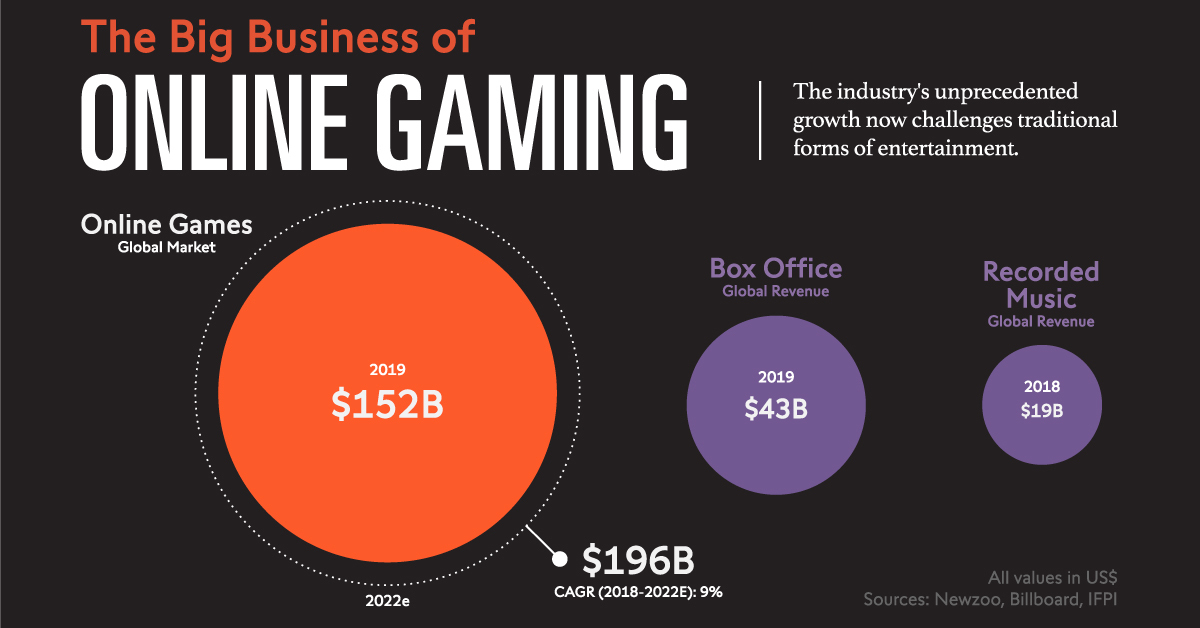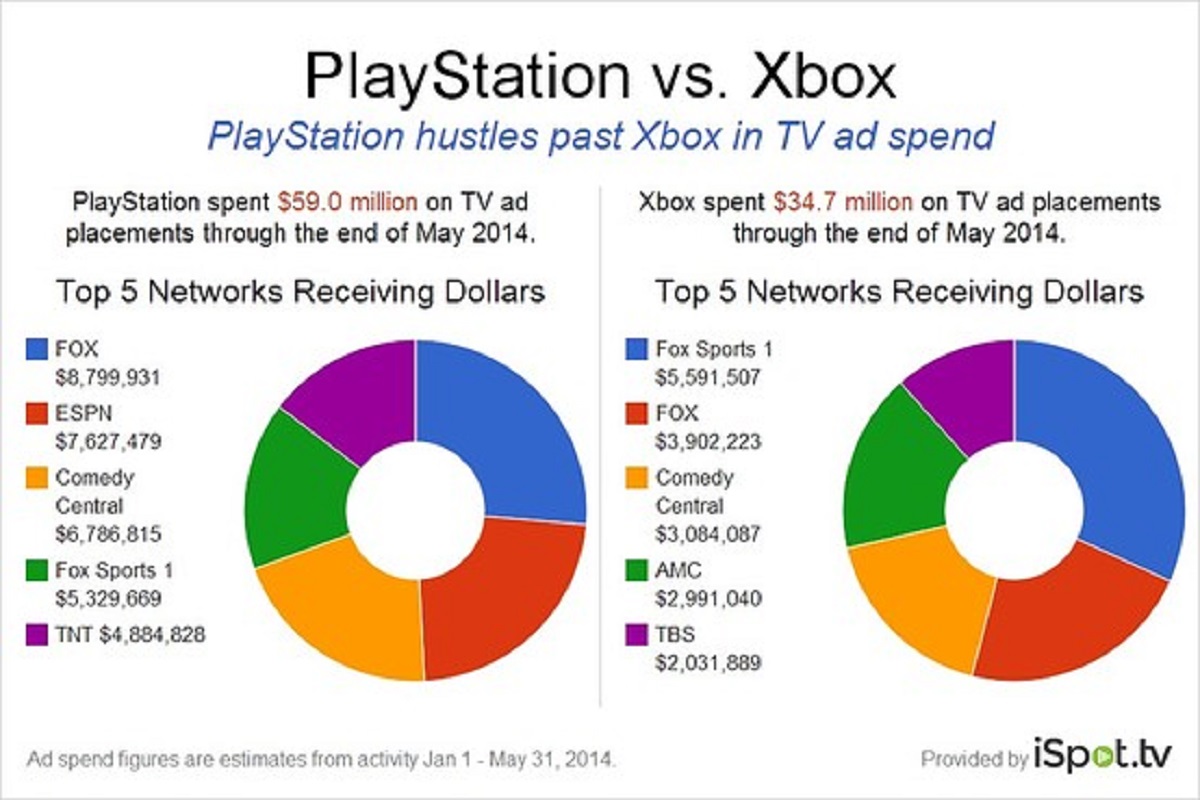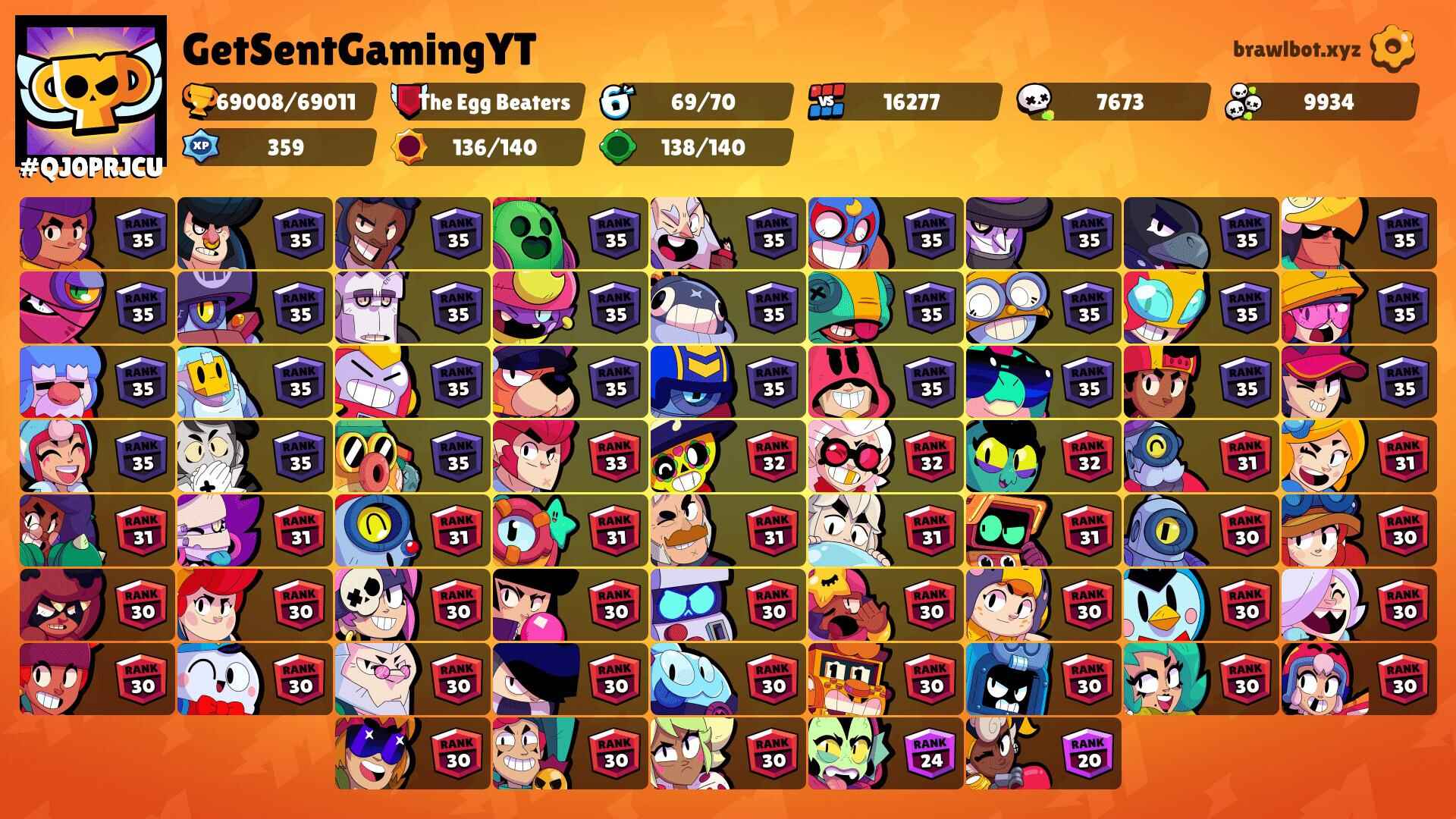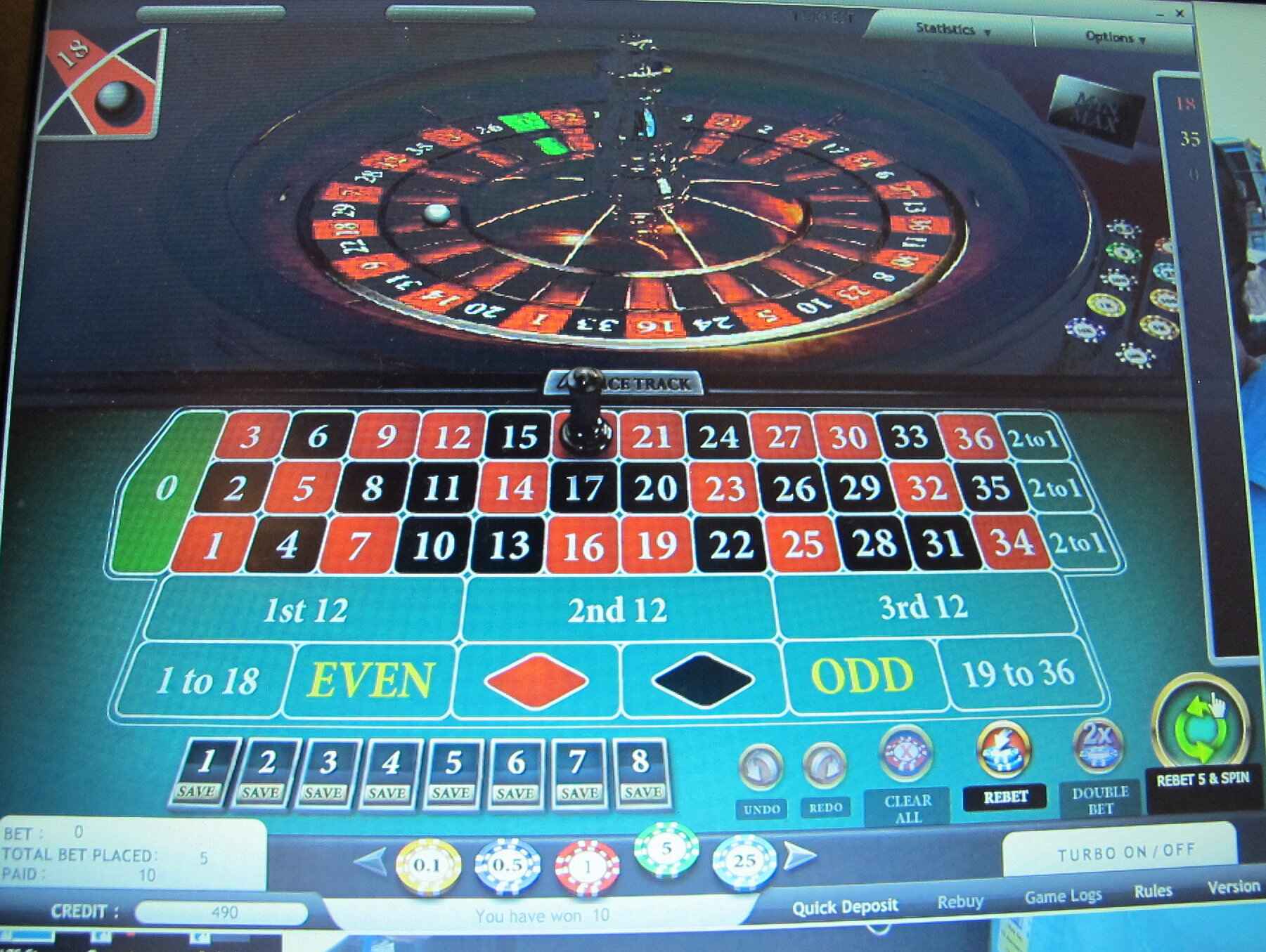Introduction
Welcome to the exciting world of online gaming! With the rise in technology and internet connectivity, the online gaming market has experienced unprecedented growth in recent years. Whether you’re an avid gamer or a game developer looking to market your creation, understanding the intricacies of online game marketing is crucial for success.
In this article, we will explore various strategies and techniques to effectively market online games. From identifying target audiences to leveraging social media and implementing SEO strategies, we will provide you with valuable insights to help you navigate the ever-evolving landscape of the online gaming industry.
Online gaming has become a global phenomenon, attracting millions of players from all walks of life. The diverse range of genres, from action-packed shooters to immersive role-playing adventures, ensures that there is something for everyone in the online gaming world. As a marketer, it is essential to familiarize yourself with the gaming landscape and understand the specific interests and preferences of your target audience.
Creating a compelling game product is just the first step in capturing the attention of potential players. To truly succeed in the competitive online gaming market, building a strong and engaged community around your game is paramount. Cultivating a sense of belonging and fostering interaction among players not only enhances their gaming experience but also promotes word-of-mouth marketing.
Furthermore, social media platforms have emerged as powerful tools for game marketing. Leveraging the vast reach and ability to target specific demographics, social media provides an effective medium for engaging with your audience, promoting your game, and generating buzz. By adopting a strategic approach and creating captivating content, you can establish a strong online presence and attract a loyal following.
Influencer marketing has also become a prominent trend in the gaming industry. Collaborating with popular gaming influencers and content creators can significantly impact the visibility and reputation of your game. These influencers have built a dedicated following and have the ability to influence purchasing decisions. Partnering with them can help you tap into their audience and garner attention for your game.
Implementing effective search engine optimization (SEO) strategies is another crucial aspect of marketing online games. By optimizing your game’s website and content to rank higher in search engine results, you increase your chances of attracting organic traffic and potential players. Understanding keywords, metadata, and on-page SEO factors can greatly contribute to improving your game’s visibility in search engine queries.
While organic traffic is important, paid advertising can also play a significant role in promoting your game. Utilizing various paid advertising channels, such as display ads, search ads, or social media ads, can help you reach a broader audience and drive targeted traffic to your game’s website. Carefully planning your ad campaigns and monitoring their performance can maximize your advertising budget and ensure a higher return on investment.
Viral marketing campaigns can also be a game-changer in promoting your online game. Creating buzz and generating organic interest through innovative and shareable content can exponentially expand your game’s reach and visibility. Designing compelling and memorable experiences that players are eager to share with their friends and social networks will help your game stand out in the crowded online gaming landscape.
Lastly, analyzing and measuring the success of your marketing efforts is vital to understanding what works and what doesn’t. Utilizing various analytical tools, such as web analytics and player behavior tracking, can provide valuable insights into your game’s performance and the effectiveness of different marketing strategies. This data-driven approach will enable you to make informed decisions, refine your marketing efforts, and continuously improve your game’s visibility and success.
So, buckle up and get ready to dive into the world of online gaming marketing. By implementing the strategies and techniques outlined in this article, you’ll be well-equipped to navigate the dynamic and ever-changing online gaming landscape and achieve your marketing goals.
Understanding the Online Gaming Market
The online gaming market is a dynamic and rapidly growing industry that has transformed the way people perceive and engage with video games. With advancements in technology and widespread internet access, gaming has become more accessible than ever before. Understanding the nuances of the online gaming market is essential for effectively marketing your game and reaching your target audience.
One key aspect of the online gaming market is its global reach. Online games have transcended geographical boundaries, allowing players from different countries and cultures to connect and compete with each other. As a marketer, it is vital to recognize the diverse player base and cater to their unique preferences and interests.
Another important factor to consider is the wide array of gaming genres available. From action and adventure to strategy and simulation, there is a game genre to suit every player’s taste. Understanding the various genres and their specific player demographics can help you tailor your marketing strategies accordingly.
Additionally, the rise of mobile gaming has had a significant impact on the online gaming market. With the proliferation of smartphones and mobile devices, more people now have access to gaming on-the-go. Mobile games offer convenience and flexibility, making them highly popular among casual gamers and people looking for quick entertainment.
Furthermore, the online gaming market is heavily influenced by emerging technologies. Virtual reality (VR) and augmented reality (AR) have revolutionized the way people experience games, offering immersive and interactive gameplay. Understanding these technologies and their potential applications can give your game a competitive edge and attract tech-savvy gamers.
Social interactions and multiplayer experiences are integral components of the online gaming market. Many players seek out online games that offer the opportunity to connect and collaborate with others. Building a strong community and providing engaging multiplayer features can significantly enhance the appeal and longevity of your game.
Moreover, the online gaming market is fueled by the rise of esports and competitive gaming. Professional gaming tournaments and leagues have gained immense popularity, attracting millions of viewers worldwide. Understanding the esports landscape and promoting your game’s competitive aspects can help establish a competitive edge and attract esports enthusiasts.
The online gaming market is constantly evolving, with new trends and innovations emerging regularly. Staying up-to-date with market trends and consumer preferences is crucial for adapting your marketing strategies and ensuring the continued success of your game. By monitoring industry developments and consumer behavior, you can identify new opportunities and stay ahead of the competition.
Overall, understanding the online gaming market is essential for effectively marketing your game. Recognizing the global reach, diverse genres, technological advancements, social interactions, and emerging trends will empower you to tailor your strategies and capture the attention of your target audience. By staying in tune with the ever-changing landscape of the online gaming market, you can position your game for success and attract a dedicated and engaged player base.
Identifying Target Audience for Online Games
Identifying your target audience is a fundamental step in effectively marketing online games. Understanding the demographics, interests, and preferences of your audience will enable you to tailor your marketing strategies and maximize your game’s appeal. Here are some key considerations to help you identify your target audience:
1. Demographics: Start by analyzing the key demographic factors of your game, such as age, gender, and location. Different age groups and genders may have varying gaming preferences and engagement levels. For example, a game targeting teenagers may have different gameplay mechanics and aesthetics than a game targeting adults.
2. Gaming Preferences: Consider the gaming preferences of your target audience. Are they casual gamers looking for short gaming sessions, or are they hardcore gamers seeking immersive and challenging experiences? Understanding the gaming preferences of your audience will help you customize your game’s features and marketing messaging accordingly.
3. Genre and Theme: Evaluate the genre and theme of your game to determine the specific audience it appeals to. Action-packed shooters may attract competitive gamers, while puzzle-solving games may resonate with those who enjoy mental challenges. By aligning your game’s genre and theme with the interests of your target audience, you can effectively communicate its value and draw in potential players.
4. Platforms and Devices: Consider the platforms and devices your target audience is likely to use for gaming. Are they predominantly PC gamers, console gamers, or mobile gamers? Understanding the preferred gaming platforms of your audience will enable you to optimize your game’s performance and tailor your marketing efforts accordingly.
5. Psychographics: Look beyond demographic factors and consider the psychographics of your target audience. This includes their interests, values, lifestyle, and motivations. Understanding their personalities and motivations for playing games will help you create targeted marketing messages and resonate with your audience on a deeper level.
6. Gaming Communities: Explore the existing gaming communities that your target audience may be a part of. Identify popular forums, social media groups, and websites where gamers with similar interests congregate. Engaging with these communities can provide valuable insights into your target audience’s preferences and help you build organic interest in your game.
7. Competitive Analysis: Conduct a competitive analysis to identify your game’s direct and indirect competitors. Analyze their target audience and marketing strategies to gain insights into the demographics and preferences they are targeting. This will help you refine your own target audience and differentiate your game from the competition.
Remember, the target audience for your game may evolve over time as you gain a deeper understanding of player behavior and preferences. Continuously analyze player feedback, monitor engagement metrics, and adapt your marketing strategies to stay connected with your evolving target audience.
By accurately identifying and understanding your target audience, you can create focused and impactful marketing campaigns that resonate with the right players. Knowing who you are targeting will not only attract more players to your game but also foster a loyal and engaged player base.
Creating a Compelling Game Product
Creating a compelling game product is essential for capturing the attention and interest of your target audience. The gameplay, visuals, story, and overall experience of your game must be engaging and memorable. Here are some key factors to consider when building a compelling game product:
1. Gameplay Mechanics: Develop gameplay mechanics that are intuitive, balanced, and enjoyable. The core mechanics should be easy to grasp, yet provide depth and challenge for players to explore and master. Offering a unique and innovative gameplay experience can set your game apart from competitors and attract a dedicated following.
2. Immersive Visuals: Invest in high-quality visuals that captivate players and enhance the overall gaming experience. Visual elements such as graphics, animations, and art style should align with your game’s theme and target audience preferences. Additionally, optimize your game’s performance across different platforms to ensure smooth gameplay and an immersive visual experience for all players.
3. Engaging Storyline: Craft a compelling storyline or narrative that draws players into the game world. A well-developed plot with interesting characters, plot twists, and meaningful choices can enhance player immersion and keep them invested in the game. Consider incorporating memorable dialogue, impactful cutscenes, and interactive storytelling elements to create an immersive narrative experience.
4. Player Progression and Rewards: Implement a satisfying progression system that keeps players engaged and motivated. Provide meaningful rewards and unlockable content as players advance, encouraging them to keep playing and exploring all your game has to offer. Balancing the difficulty curve and offering a sense of accomplishment can contribute to a rewarding gameplay experience.
5. Multiplayer and Social Features: If suitable for your game’s concept, consider incorporating multiplayer or social features. Online multiplayer modes, cooperative gameplay, or community-driven content can greatly enhance player engagement and create a sense of community within your game. Fostering social interactions and facilitating player-to-player connections can significantly extend the lifespan of your game.
6. Testing and Iteration: Conduct rigorous testing throughout the development process to gather feedback and identify areas for improvement. Engage with a group of beta testers to gain valuable insights into their experiences, preferences, and suggestions. Iteratively refine your game based on user feedback to enhance its overall quality and appeal.
7. Polish and Attention to Detail: Pay attention to the finer details that can elevate your game from good to great. Refine the user interface (UI), ensure smooth control responsiveness, optimize loading times, and eliminate any bugs or glitches. These small but significant improvements can greatly impact the user experience and overall perception of your game.
Remember, creating a compelling game product requires a deep understanding of your target audience’s preferences and expectations. Regularly seek feedback from players, conduct market research, and monitor industry trends to stay updated and continually improve your game’s quality.
By focusing on creating a compelling game product, you can attract and retain players, generate positive word-of-mouth, and pave the way for successful marketing and monetization strategies in the online gaming market.
Building an Online Gaming Community
Building a strong and engaged online gaming community is essential for the success of your game. A vibrant community not only enhances the player experience but also acts as a powerful marketing asset. Here are some key strategies to help you build and nurture an online gaming community:
1. Create Channels for Communication: Establish dedicated channels where players can interact and communicate with each other and with your development team. This can include forums, Discord servers, social media groups, or in-game chat systems. Encourage open dialogue, foster a welcoming atmosphere, and actively participate in discussions to build a sense of community.
2. Organize Events and Tournaments: Organize online events, tournaments, or competitions within your game to encourage player engagement and foster healthy competition. These events can range from in-game challenges to community tournaments with rewards and recognition. This not only keeps players active and invested in your game but also provides opportunities for players to connect and showcase their skills.
3. Encourage User-Generated Content: Empower your community to contribute to your game’s content through user-generated content (UGC). This can include player-created mods, maps, skins, or even fan art. Recognize and highlight exceptional UGC in your game or on social media, elevating community members and encouraging others to get involved. UGC fosters creativity and a sense of ownership, further strengthening the bond between players and your game.
4. Engage with Influencers: Collaborate with influential gamers, streamers, and content creators who align with your game’s target audience and values. Inviting them to play and promote your game can significantly boost visibility and attract new players. Engaging with influencers can also help you tap into their devoted fan base, generating excitement and interest in your game within their communities.
5. Implement Loyalty Programs: Reward loyal players with exclusive in-game content, discounts, or special perks. Implement a loyalty program that recognizes and rewards players based on their engagement and contribution to the community. This fosters a sense of belonging and encourages players to continue supporting your game.
6. Be Responsive and Transparent: Engage with your community by regularly addressing their concerns, responding to feedback, and providing updates on game development. Transparency builds trust and shows that you value your players’ opinions. Regularly communicate with your community through social media, newsletters, or developer blogs to keep them informed and engaged.
7. Recognize and Celebrate Community Achievements: Acknowledge and celebrate milestones, achievements, and notable contributions from your community. Showcase player accomplishments on social media, host virtual award ceremonies, or even organize community spotlights. By recognizing and celebrating your community’s achievements, you foster a sense of pride and encourage continued engagement.
Remember, building an online gaming community takes time and dedication. Actively nurture and engage with your community, listen to their feedback, and continuously strive to improve their experience. By creating a welcoming and active community, you not only foster a loyal player base but also cultivate a strong network of advocates who will help spread positive word-of-mouth about your game.
A thriving community not only enhances player satisfaction and retention but also attracts new players to join the ranks of your devoted fan base. By investing in building an online gaming community, you lay the foundation for long-term success in the competitive online gaming market.
Leveraging Social Media for Game Marketing
Social media platforms have become powerful tools for marketing online games, offering the ability to reach a vast and diverse audience. Leveraging social media effectively can significantly boost the visibility, engagement, and success of your game. Here are key strategies to harness the power of social media for game marketing:
1. Identify the Right Platforms: Understand the demographics and preferences of your target audience to determine which social media platforms they are most active on. Focus your efforts on platforms such as Facebook, Twitter, Instagram, YouTube, or Twitch, depending on where your audience spends their time. Niche platforms like Discord or Reddit can also be valuable for connecting with specific gaming communities.
2. Create Engaging Content: Develop high-quality and engaging content that resonates with your audience. This can include game trailers, gameplay videos, teasers, behind-the-scenes content, developer updates, or even contests and giveaways. Take advantage of visuals, gifs, and videos to capture attention and evoke curiosity. Encourage user-generated content and fan art to foster a sense of community and generate organic promotion.
3. Interact and Engage: Actively engage with your audience by responding to comments, messages, and mentions. Encourage discussions, ask for feedback, and pose questions to prompt engagement. Show genuine interest in what your community has to say, and foster a positive and interactive environment. This not only strengthens the bond between players and your game but also encourages others to join the conversation.
4. Collaborate with Influencers: Collaborate with popular gaming influencers, streamers, or content creators who have a significant following and align with your game’s target audience. Partner with them to create sponsored content, host gameplay sessions, or even feature your game on their channels. Influencers can provide valuable exposure, authentic reviews, and recommendations, reaching a wider audience and boosting your game’s visibility.
5. Run Paid Advertising Campaigns: Social media platforms offer powerful advertising tools to target specific demographics and reach a larger audience. Utilize these platforms’ advertising features, such as Facebook Ads, Instagram Ads, or Twitter Ads, to promote your game to relevant users. Carefully define your target audience, set a budget, and test different ad formats and content to optimize your campaigns.
6. Utilize Hashtags and Trending Topics: Stay current with gaming trends and industry news, and use relevant hashtags and trending topics to increase the visibility of your content. This allows your posts to be discoverable by users interested in similar topics. Incorporate popular gaming hashtags or create your own unique hashtags to encourage user-generated content and create a sense of community around your game.
7. Monitor and Analyze Performance: Utilize social media analytics tools to measure the success and impact of your social media marketing efforts. Track metrics such as engagement rate, reach, clicks, likes, and shares to understand which content resonates best with your audience. Use this data to refine your social media strategy, optimize your content, and make data-driven decisions to improve your game’s visibility and reach on social media platforms.
Remember, social media is not solely for promoting your game but also for building relationships and fostering a sense of community. Engage authentically, provide value, and showcase the personality behind your game to establish a strong connection with your audience. By leveraging social media effectively, you can engage with your target audience, amplify your game’s presence, and drive more awareness and interest in your game.
Stay up to date with the latest social media trends, keep experimenting with new content formats, and adapt your strategies as social media platforms evolve. By embracing social media as a central pillar of your game marketing strategy, you can unlock immense potential for promoting your game and connecting with a vibrant and engaged gaming community.
Utilizing Influencer Marketing in the Gaming Industry
Influencer marketing has become a prominent and effective strategy in the gaming industry. Collaborating with influential gamers, streamers, and content creators can significantly impact the visibility and reputation of your game. Here’s how you can utilize influencer marketing to your advantage:
1. Identify Suitable Influencers: Research and identify influential gamers, streamers, and content creators whose target audience aligns with your game’s target demographic. Consider factors such as their audience size, engagement rate, content relevance, and authenticity. Look for influencers who have built a dedicated following and have a genuine passion for gaming.
2. Collaborate on Sponsored Content: Engage in sponsored content collaborations with influencers. This involves paying influencers to create content featuring your game, such as gameplay videos, live streams, reviews, or sponsored social media posts. Influencers can provide an authentic and engaging perspective, attracting their audience’s interest and generating awareness for your game.
3. Offer Early Access or Exclusive Content: Provide influencers with early access to your game or exclusive in-game content. This allows them to create unique and exclusive content for their audience, generating excitement and curiosity. Offering exclusive content encourages influencers to promote your game, giving their audience a reason to engage and potentially purchase your game.
4. Utilize Affiliate Marketing: Set up affiliate marketing programs with influencers, where they receive a commission for driving users to purchase your game through their unique referral links. This incentivizes influencers to actively promote your game and can result in a mutually beneficial partnership, as they earn a commission for every successful referral.
5. Engage in Collaborative Events: Collaborate with influencers to host collaborative events, such as live streams, tournaments, or meetups. These events can generate excitement and engagement among both the influencer’s audience and your existing fan base. Consider providing prizes or exclusive rewards for participants, encouraging increased participation and exposure for your game.
6. Harness User-Generated Content: Encourage influencers to engage with their audience and foster user-generated content related to your game. This can include challenges, fan art contests, or gameplay highlights. User-generated content not only increases engagement but also serves as organic promotion for your game, as the influencer’s audience participates and shares their creations.
7. Monitor and Measure Performance: Establish key performance indicators (KPIs) to monitor the success of your influencer marketing campaigns. Track metrics such as reach, engagement, conversion rate, and overall impact on your game’s performance. Analyze the data to identify which influencers or types of content yield the best results and refine your influencer marketing strategy accordingly.
Remember, building genuine relationships with influencers is crucial for successful influencer marketing. Treat influencers as valued partners and collaborate with them in a way that aligns with their own brand and content style. By leveraging the influence of gamers and content creators, you can tap into their dedicated audience base, gain exposure, and foster interest and excitement for your game in the gaming community.
Continuously research and engage with new influencers, stay up to date with gaming trends, and adapt your influencer marketing strategy to effectively reach and resonate with your target audience. By harnessing the power of influencer marketing, you can significantly increase your game’s visibility, attract new players, and build a strong and engaged community around your game.
Implementing Effective SEO Strategies
Implementing effective Search Engine Optimization (SEO) strategies is crucial for increasing the visibility and discoverability of your game in search engine results. By optimizing your game’s website and content, you can improve your rankings and attract organic traffic from players actively searching for games. Here are key SEO strategies to implement:
1. Keyword Research: Conduct thorough keyword research to identify the search terms and phrases players use when looking for games similar to yours. Use keyword research tools to identify high-volume and low-competition keywords that are relevant to your game. Incorporate these keywords naturally into your website’s content, meta tags, headings, and image alt attributes.
2. Optimize Website Structure: Ensure your game’s website has a clear and organized structure that is easy to navigate. This includes using descriptive page titles, incorporating internal linking between relevant pages, and creating a user-friendly URL structure. Optimized website structure helps search engines crawl and index your site more effectively, improving its visibility in search results.
3. Create High-Quality Content: Develop high-quality and unique content that provides value to your target audience. This can include blog posts, developer diaries, gameplay guides, or news updates. Optimize your content by naturally incorporating relevant keywords, using header tags, and including engaging visuals. Regularly updating your website with fresh and valuable content can improve your site’s search engine rankings.
4. Optimize Meta Tags: Pay attention to your game’s meta tags, including the meta title and meta description. These elements are displayed in search engine results and can greatly impact click-through rates. Craft concise and enticing meta tags that accurately describe your game, include relevant keywords, and compel users to click.
5. Build Quality Backlinks: Acquire high-quality backlinks from reputable gaming websites, blogs, or influencers. Backlinks are links from other websites pointing to your game’s website, signaling to search engines that your site is trusted and authoritative. Seek opportunities for guest posting, collaborations, or partnerships with relevant gaming websites to earn quality backlinks that boost your site’s SEO.
6. Optimize for Mobile: Ensure your game’s website is optimized for mobile devices. With the increasing number of mobile gamers, responsive web design and mobile-friendliness are essential for better user experience and higher search rankings. Design your site to be mobile-responsive, with fast loading times and easy navigation on smaller screens.
7. Monitor and Analyze: Utilize SEO analytics tools to monitor your game’s website performance and track key metrics such as organic search traffic, bounce rate, and conversion rate. Analyze the data to identify areas for improvement and measure the effectiveness of your SEO strategies. Regularly review your SEO tactics, adapt to algorithm updates, and make data-driven decisions to optimize your game’s online presence.
Remember, SEO is an ongoing process that requires regular monitoring, analysis, and adaptation. Stay informed about industry trends, search engine algorithms, and user behavior to remain competitive. By implementing effective SEO strategies, you can increase your game’s visibility in search engines, attract organic traffic, and ultimately reach a wider audience of potential players.
Keep in mind that while SEO is important, it should not compromise the overall user experience or the integrity of your game’s content. Balancing SEO optimization with user-centric design and engaging gameplay will contribute to long-term success in the highly competitive online gaming market.
Using Paid Advertising to Promote Online Games
Utilizing paid advertising is a highly effective strategy for promoting online games and reaching a wider audience. Paid advertising allows you to target specific demographics, increase brand visibility, and drive targeted traffic to your game’s website. Here are key considerations when using paid advertising to promote your online game:
1. Define Your Advertising Goals: Start by defining clear goals and objectives for your paid advertising campaigns. Are you aiming to increase game downloads, boost website traffic, or improve user engagement? Defining your goals will help you tailor your ad messaging, targeting, and optimization towards achieving those objectives.
2. Select the Right Advertising Channels: Choose the advertising channels that align with your game’s target audience and marketing goals. Common online advertising channels for promoting games include social media platforms, search engine ads, display ads, and video ads. Research the strengths and demographics of each channel to determine which ones will have the highest reach and potential impact for your game.
3. Target Specific Demographics: Utilize the targeting options provided by the advertising platforms to narrow down your audience based on demographics, interests, gaming preferences, and other relevant criteria. Narrow targeting enables you to reach the right audience who are most likely to be interested in your game, increasing the likelihood of conversion and engagement.
4. Design Compelling Ad Creative: Create visually appealing and attention-grabbing ad creative that showcases the unique selling points of your game. Use high-quality images, engaging videos, compelling copy, and strong calls-to-action to entice users to click on your ads. Test different variations of ad creative to optimize performance and drive better results.
5. Optimize for Conversion: Implement conversion tracking to measure the effectiveness of your ads and optimize your campaigns. Set up conversion goals such as game downloads, sign-ups, or in-app purchases, and track the performance of your ads based on these goals. Optimize your campaigns by adjusting bids, targeting, and ad creative to maximize conversions and ROI.
6. Utilize Retargeting: Implement retargeting campaigns to re-engage users who have previously shown interest in your game. This involves displaying ads to users who have visited your website or interacted with your game’s social media profiles. Retargeting can remind potential players about your game and encourage them to take the desired action, such as downloading the game or making a purchase.
7. Monitor and Analyze Performance: Regularly monitor the performance of your paid advertising campaigns using analytics tools provided by the advertising platforms. Track metrics such as impressions, clicks, click-through rate (CTR), conversion rate, and cost per acquisition (CPA). Analyze the data to identify areas for optimization and make data-driven decisions to fine-tune your advertising strategies.
Remember, while paid advertising can be highly effective, it’s essential to set a budget and closely monitor your spending to ensure a positive return on investment. Continuously evaluate the performance of your ad campaigns, adjust your strategies as needed, and experiment with different targeting, messaging, and ad formats to find the optimal combination for promoting your online game successfully.
By leveraging paid advertising effectively, you can significantly increase your game’s visibility, attract targeted players, and drive conversions. It’s a valuable tool to complement your organic marketing efforts and ensure your game reaches the right audience in the highly competitive online gaming industry.
Developing Viral Marketing Campaigns
Viral marketing campaigns have the potential to skyrocket the visibility and success of your online game by generating widespread buzz and organic promotion. These campaigns are designed to capture the attention and interest of the target audience, inspiring them to share your game with their networks. Here are key strategies for developing effective viral marketing campaigns:
1. Create Shareable and Unique Content: Develop content that stands out from the crowd and sparks curiosity or emotion. It could be a captivating game trailer, a hilarious gameplay video, an interactive quiz, or a meme that relates to your game. The key is to create something that is highly shareable and leaves a memorable impression on viewers.
2. Leverage Social Media Channels: Utilize the power of social media platforms to amplify the reach of your viral campaign. Craft compelling posts, including catchy captions and visuals, and encourage users to share, like, and comment. Leverage relevant hashtags and engage with your audience to generate further traction and encourage organic promotion.
3. Engage Influencers and Content Creators: Collaborate with influential gamers, social media personalities, or content creators who have a wide following and align with your game’s target audience. Create partnerships to feature your viral campaign in their content or to have them participate directly. Influencers can significantly amplify the reach and engagement of your campaign through their dedicated fan base.
4. Utilize User-Generated Content: Encourage your community and players to create and share their own content related to your game. Host contests, challenges, or giveaways that incentivize users to generate user-generated content (UGC). This not only fosters engagement but also provides you with a stream of authentic content that can be shared across various platforms.
5. Emphasize Shareability and Call-to-Action: When designing your campaign, make it easy for users to share by incorporating social sharing buttons or including clear instructions on how to share. Additionally, include a strong call-to-action that encourages users to share the content, tagging their friends or using specific hashtags, to spread the word about your game.
6. Utilize Influential Communities: Identify online communities, forums, or groups that have a significant influence in the gaming industry and are relevant to your target audience. Engage with these communities by sharing your viral campaign and encouraging discussion. This can help generate buzz, drive traffic to your game’s website, and attract new players.
7. Monitor, Adapt, and Capitalize: Monitor and analyze the performance of your viral marketing campaign in real-time. Track key metrics such as shares, engagement, reach, and conversion rates. Learn from the data, adapt your strategies if needed, and capitalize on any trends or unexpected boosts in momentum during the campaign.
Remember, the success of a viral marketing campaign is never guaranteed, as it relies on a combination of creativity, timing, and audience reception. However, by crafting compelling and shareable content, leveraging social media, engaging influencers, and utilizing user-generated content, you can greatly increase the likelihood of creating a campaign that goes viral and generates widespread awareness and interest in your online game.
Keep in mind that viral campaigns are not standalone marketing efforts. They should be integrated with your overall marketing strategy and serve as a catalyst for sustained growth in your player base and community engagement.
Analyzing and Measuring Marketing Success in Online Gaming
In the competitive landscape of online gaming, analyzing and measuring the success of your marketing efforts is crucial for driving continuous improvement and making data-driven decisions. By monitoring and evaluating your marketing initiatives, you can gain valuable insights into player behavior, campaign effectiveness, and overall performance. Here are key considerations for analyzing and measuring marketing success in online gaming:
1. Set Clear and Measurable Goals: Clearly define your marketing goals and key performance indicators (KPIs) to track progress and measure success. Examples of common marketing goals in online gaming include increasing game downloads, improving player retention, driving in-app purchases, or boosting engagement metrics such as time spent in the game.
2. Utilize Analytics Tools: Implement analytics tools, such as Google Analytics or game-specific analytics platforms, to gather valuable data on user behavior, audience demographics, traffic sources, and conversion rates. These tools provide insights into the effectiveness of your marketing channels, campaigns, and strategies.
3. Track User Acquisition: Measure the number of new players acquired through different marketing channels, such as social media, paid advertising, influencer collaborations, or referrals. Analyze the quality and lifetime value of these acquired players to determine which channels are most effective in driving valuable and engaged users.
4. Monitor Player Engagement: Track engagement metrics, such as time spent in the game, frequency of play, or completion rates of key actions. Understanding how players interact with your game can help you identify areas for improvement, optimize gameplay elements, and create a more engaging experience that retains players for longer periods.
5. Evaluate Conversion Rates: Analyze conversion rates at different stages of the player journey, such as website visitors to downloads, or free trial users to paying customers. This allows you to identify potential bottlenecks or areas where players drop off, enabling you to optimize conversion funnels and improve overall conversion rates.
6. Measure Return on Investment (ROI): Calculate the return on investment for your marketing initiatives by comparing the costs incurred with the revenue generated. Determine the ROI for each marketing channel or campaign to identify the most cost-effective avenues for acquiring and retaining players. Consider both monetary returns, such as in-app purchases, and non-monetary returns, such as increased brand recognition.
7. Conduct A/B Testing: Implement A/B testing to compare the performance of different marketing tactics, messages, or creatives. Test variables such as ad copy, visuals, landing page design, or call-to-action buttons. By analyzing the results, you can identify the most effective approaches and optimize your marketing efforts accordingly.
8. Seek Player Feedback: Actively gather feedback from players through surveys, focus groups, or social media interactions. Player feedback provides valuable insights into their preferences, pain points, and overall satisfaction with your game and marketing efforts. Use this feedback to refine your strategies, address concerns, and make informed decisions for future marketing initiatives.
9. Continuously Monitor Industry Trends: Stay informed about the latest industry trends, competitor strategies, and changes in player behavior. Monitor online discussions, industry publications, and social media to gather insights that can shape your marketing strategies and keep your game relevant in a rapidly evolving online gaming landscape.
By analyzing and measuring marketing success in online gaming, you gain valuable insights that can drive continuous improvement and inform future marketing decisions. Regularly review data, evaluate performance, and adapt your strategies to optimize acquisition, engagement, conversion, and player retention. The ability to effectively analyze and measure marketing success is essential for achieving sustained growth and success in the competitive online gaming market.
Conclusion
In the dynamic and ever-evolving landscape of online gaming, effective marketing strategies are crucial for success. From understanding the market and identifying target audiences to creating compelling game products and building vibrant communities, every aspect of marketing plays a vital role in attracting, engaging, and retaining players.
By leveraging social media platforms, influencer marketing, SEO strategies, paid advertising, and viral campaigns, you can increase your game’s visibility, reach a wider audience, and foster a dedicated community. Analyzing and measuring your marketing efforts allows you to make data-driven decisions, optimize your strategies, and continuously improve the performance and success of your game.
Remember, to stand out in the competitive online gaming market, it’s important to create unique and captivating game experiences that resonate with your target audience. Engage with influencers, listen to player feedback, and stay attuned to industry trends to stay ahead of the curve.
Embrace creativity, innovation, and a user-centric approach in your marketing efforts. Success in online gaming marketing requires a balance of understanding player desires, delivering exceptional experiences, and utilizing effective marketing strategies to maximize reach and engagement.
By implementing the strategies and techniques outlined throughout this article, you’ll be well-equipped to navigate the exciting world of online gaming marketing and achieve your goals. Stay adaptable, stay competitive, and enjoy the journey of promoting and growing your online game in this ever-thriving industry.

























